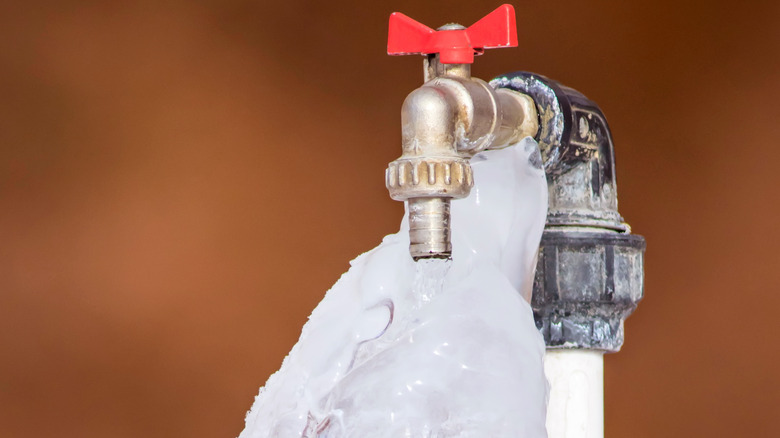Essential Tips to Prevent Frozen Plumbing in Winter: Specialist Guidance
Essential Tips to Prevent Frozen Plumbing in Winter: Specialist Guidance
Blog Article
Just about every person may have their own idea on the subject of How To Avoid Freezing Pipes.

Winter can wreak havoc on your plumbing, particularly by freezing pipes. Below's just how to avoid it from occurring and what to do if it does.
Intro
As temperatures decline, the risk of frozen pipes increases, potentially leading to costly fixings and water damages. Comprehending how to prevent icy pipes is essential for homeowners in cold environments.
Prevention Tips
Shielding prone pipes
Wrap pipes in insulation sleeves or make use of warm tape to protect them from freezing temperatures. Focus on pipelines in unheated or exterior locations of the home.
Home heating techniques
Maintain indoor spaces adequately heated up, specifically locations with pipes. Open up cabinet doors to allow warm air to distribute around pipes under sinks.
Exactly how to recognize icy pipelines
Look for decreased water circulation from taps, uncommon smells or sounds from pipelines, and noticeable frost on revealed pipelines.
Long-Term Solutions
Architectural changes
Take into consideration rerouting pipelines far from exterior walls or unheated locations. Include additional insulation to attics, basements, and crawl spaces.
Upgrading insulation
Buy top notch insulation for pipes, attic rooms, and walls. Correct insulation helps preserve regular temperature levels and minimizes the danger of frozen pipelines.
Shielding Outside Plumbing
Garden pipes and outdoor faucets
Disconnect and drain yard pipes before wintertime. Install frost-proof spigots or cover outside faucets with insulated caps.
Recognizing Frozen Pipelines
What creates pipelines to ice up?
Pipelines ice up when revealed to temperatures below 32 ° F (0 ° C) for extended periods. As water inside the pipelines freezes, it increases, taxing the pipe wall surfaces and possibly creating them to burst.
Risks and problems
Icy pipelines can result in water system disturbances, property damages, and expensive repair work. Ruptured pipes can flood homes and trigger comprehensive architectural damage.
Signs of Frozen Water Lines
Identifying icy pipes early can prevent them from breaking.
What to Do If Your Pipes Freeze
Immediate actions to take
If you believe frozen pipes, maintain faucets available to eliminate stress as the ice melts. Utilize a hairdryer or towels soaked in warm water to thaw pipes gradually.
Final thought
Avoiding icy pipes calls for positive actions and quick feedbacks. By comprehending the reasons, signs, and preventive measures, home owners can protect their pipes during winter.
5 Ways to Prevent Frozen Pipes
Drain Outdoor Faucets and Disconnect Hoses
First, close the shut-off valve that controls the flow of water in the pipe to your outdoor faucet. Then, head outside to disconnect and drain your hose and open the outdoor faucet to allow the water to completely drain out of the line. Turn off the faucet when done. Finally, head back to the shut-off valve and drain the remaining water inside the pipe into a bucket or container. Additionally, if you have a home irrigation system, you should consider hiring an expert to clear the system of water each year.
Insulate Pipes
One of the best and most cost-effective methods for preventing frozen water pipes is to wrap your pipes with insulation. This is especially important for areas in your home that aren’t exposed to heat, such as an attic. We suggest using foam sleeves, which can typically be found at your local hardware store.
Keep Heat Running at 65
Your pipes are located inside your walls, and the temperature there is much colder than the rest of the house. To prevent your pipes from freezing, The Insurance Information Institute suggests that you keep your home heated to at least 65 degrees, even when traveling. You may want to invest in smart devices that can keep an eye on the temperature in your home while you’re away.
Leave Water Dripping
Moving water — even a small trickle — can prevent ice from forming inside your pipes. When freezing temps are imminent, start a drip of water from all faucets that serve exposed pipes. Leaving a few faucets running will also help relieve pressure inside the pipes and help prevent a rupture if the water inside freezes.
Open Cupboard Doors
Warm your kitchen and bathroom pipes by opening cupboards and vanities. You should also leave your interior doors ajar to help warm air circulate evenly throughout your home.

Hopefully you enjoyed our piece about How to prepare your home plumbing for winter weather. Thanks so much for spending some time to read our blog post. If you please pause to distribute this entry if you liked it. Thank you for being here. Kindly stop by our site back soon.
Additional Resources Report this page